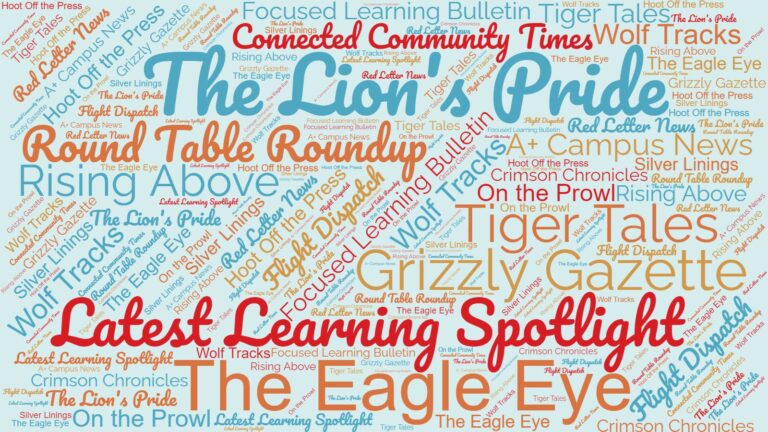“People with goals succeed because they know where they are going. It’s as simple as that.” —Earl Nightingale
When a team of educators sets commonly aligned goals and knows what they want their students to accomplish, the school succeeds. Whether it’s students mastering a certain skill or grasping a set of standards, success happens when everyone is on the same page and knows what they want to accomplish. However, as any school leader knows, getting there is easier said than done.
Enter curricular chaos: When well-intentioned teachers teach a different aspect or portion of the standards, or even a different standard altogether, making any type of goal almost impossible to define. There are many implications to this, one being that no one really knows if students are learning the material. Perhaps the best way to end curricular chaos is through collaboration. When we view a whole school staff as a professional learning community (PLC) dedicated to improving individually and as a team, learning throughout the school can thrive. Here are some tips for building a strong professional learning community in your school.
1. Allocate time for teachers to collaborate.
When teachers collaborate and see themselves as a team rather than solo practitioners, classroom learning thrives. Set aside time at least once a month for content-area teams to talk with each other about what is working and not working in their classrooms. As you build a PLC culture, it might be helpful to provide a focus for teachers’ time together. You could have them bring a certain assessment to the table to evaluate data. Ask them to share stories from a specific lesson they both gave. They can then talk about what went well and what didn’t.
This PLC time could take the place of a weekly staff meeting once a month. It will be time well spent as your teachers align with each other to figure what works best for kids.
2. Make sure everyone teaches the same essential skills and knowledge.
There is an enormous amount of material to cover in every subject area and grade level. Whether it’s first grade English or fifth grade math, the content is vast and almost impossible to cover in a single school year. This is why it’s vital that teachers deliver the same curriculum throughout the year. How can we determine if students taught by two different teachers achieved the same level of mastery if they were taught different material and assessed differently? This is why having curriculum strongly rooted in standards is so vital.
Having shared material to direct the learning prevents schools from entering curricular chaos. It eliminates the discrepancy caused by picking and choosing which content to teach. Instead, it specifies the work teachers and students do. This isn’t to say teachers don’t have their own individual methods and practices. Curriculum can serve as a guide, and it’s a teacher’s skills that bring it to life.
3. Make learning targets clear so teachers are free to teach.
When teachers are clear on what they have to teach, they have more freedom and time to figure how they want to teach it. Having a common curriculum can seem restrictive to teachers in their work. However, an MDR research report found that teachers spend an average of seven hours per week searching for instructional materials and another five hours creating their own. This is twelve hours a week, often spent outside of school hours, that teachers could be using to reflect on pedagogy, assess student work, build relationships, and, of course, have some time away from school-related tasks.
Set goals for what teams want to achieve, make sure everyone’s voice is heard, and adjust along the way. So much time can be wasted when teachers are unclear about what they are supposed to achieve. By aligning goals and learning targets, they get that time back.
4. Use common assessments.
Another source of curricular chaos is the use of different assessments in the same content-area classes. If one of the primary goals of school is to help students master skills and content, the method to determine their level of mastery should be the same across the board. Common assessments give educators a way to determine where success is happening most often and why. One teacher may have a strong method for teaching grammar, while another has mastered creative writing.
When a professional learning community compares assessment data, these teachers can share with each other their methods and processes. School leaders can facilitate these conversations to make everyone better at their work! Having curriculum with strong formative and summative assessments for every standard teachers cover ensures every student can properly demonstrate mastery.
5. Acknowledge the challenges in collaboration.
Collaboration is hard work. You might encounter staff members resistant to this team mentality. To ease into a collaborative culture, match tasks and roles to task members based on their strengths. If someone loves analyzing data, see if they want to do some of that pre-meeting work. If another teacher enjoys leading discussions, appoint them as leader of these collaboration meetings. By doing so, teachers can lean into their strengths and combine them for effective team work.
Having a vibrant curriculum with strong instructional activities and effective assessments gives teachers the freedom to teach the way they do best. But this can only happen when educators see themselves as a team, a group of professionals working together to ensure that every student can become a master of the skills and content.


